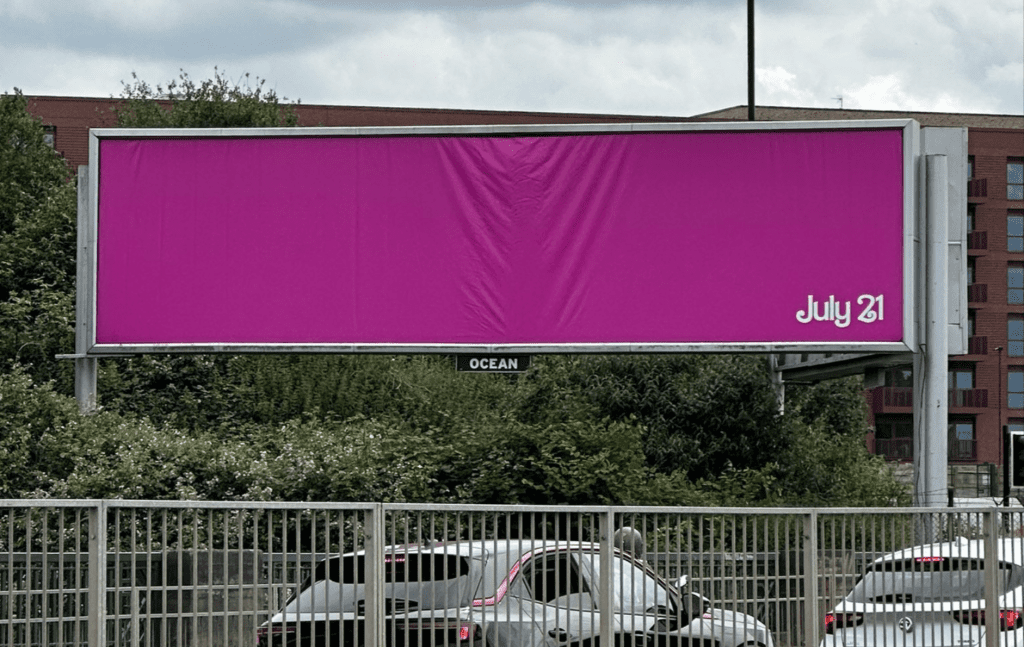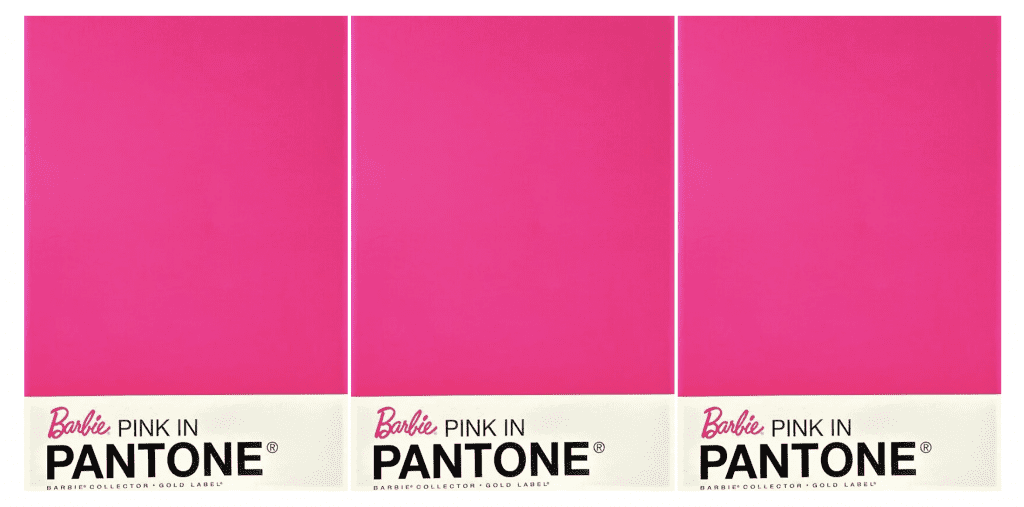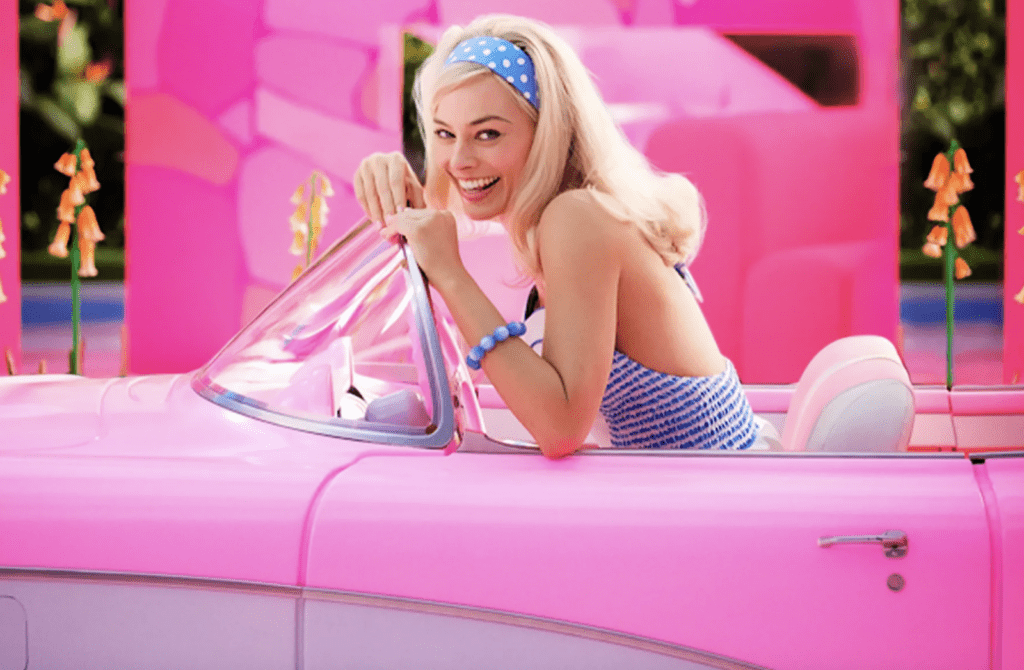The outsized promotional campaign leading up to the official release of the Barbie movie on July 21 has been difficult to miss. From a pink-tinted Google search page – complete with pink fireworks graphics – to a seemingly endless list of collaborations for all sorts of goods for kids and adults, everything seems to be drenched in Barbie pink at the moment. But what exactly is “Barbie Pink” and what rights does Mattel have in the hue? Companies can, after all, amass trademark rights in – and registrations for – their signature colors for use on specific goods/services if they can show that such colors function in a source-indicating capacity. So, where does Mattel stand when it comes to monopolizing color?
First things first, Mattel does not possess trademark registrations for any pink hues on their own in the same way that UPS, for example, has registered its “Pullman” brown color for use on “vehicles … [for] motor vehicle transportation and delivery of personal property” and clothing in connection with the “delivery of personal property by air, rail, boat and motor vehicles”; Tiffany & Co. has registered its robin’s egg blue color (Pantone 1837) for use on an array of goods and services – from jewelry and corresponding retail services to fragrance products, tableware, and leather goods; or T-Mobile has registrations for the shade of magenta that appears across its brand for use on “telecommunications and information technology services,” among other things.
Side Note: On more than one occasion since at least 2001, Mattel has applied to register the “Barbie Pink” word mark with the U.S. Patent and Trademark Office (“USPTO”) for use on goods/services like dolls, homewares, paper products, garments, hair accessories, eyewear, etc., only to ultimately abandon those applications. (Peep three of the “Barbie Pink” applications for registration here, here, and here.)
No Registration, No Problem
A lack of color registrations for Mattel is hardly the whole picture, though, as trademark rights are garnered through the use of a mark (not registration of it) and Barbie has been partying in multiple pink hues for decades, with Pantone 219C – a color that combines “magenta and pink” – being the most prominent among them. In fact, all signs seem to point to Mattel maintaining rights in the specific Pantone hue for use on products in its immediate orbit – i.e., on things like dolls, corresponding toys/accessories, apparel and accessories for humans, various forms of media, etc. – due to years of consistent use of the Pantone 219C shade.
Reflecting on Mattel’s rights on this front and in particular, the pink billboards that have popped up ahead of the movie’s release, which consist almost exclusively of the color pink, trademark lawyer and Suffolk Law IP Clinic Director Rachael Dickson stated that the Barbie pink hue as used on doll packaging “has gained distinctiveness over the years.” Such secondary meaning bodes well from a trademark perspective given that a single color (as distinct from certain multi-color marks) may function and be protected as a trademark as long as it has acquired distinctiveness.

(It is worth noting that secondary meaning is less of an obstacle than might otherwise meet the eye when it comes to color because “if a brand is popular enough, a significant number of consumers will [eventually] associate that color with that particular brand,” University of Oklahoma Law professor Jon Lee previously told TFL. Instead, a bigger hurdle for brands looking to claim trademark rights in their use of color may be aesthetic functionality.)
Policing its Pink
In addition to making consistent use of the color (potentially in a trademark capacity), Mattel appears to routinely police what it perceives as infringing uses of its pink, and some of the trademark suits that it has waged over the years shed light on its stance on “Barbie Pink.” For instance, in the complaint that it filed against Rap Snacks in August 2022 over the Barbie-Que Honey Truffle Potato Chips that the food company created in collaboration with rapper Nicki Minaj, Mattel asserted that Rap Snacks’ “blatant and intentional use of [its] trademark will cause consumers to associate [the Barbie-Que] products with [it] and its BARBIE brand.” Such a “false association” was being “enhanced even further” by Rap Snacks’ “use of … colors that are associated with the BARBIE brand,” namely, pink hues, Mattel argued. Unfortunately for those of us who were looking to glean additional insight into Mattel’s approach to – and the strength/validity of – its pink trademark, the case settled just a month after it was filed.
Before that, in the well-known trademark infringement and dilution, unfair competition, and false designation of origin lawsuit that Mattel filed against Aqua’s label MCA Records in 1997 over the song “Barbie Girl,” Mattel asserted that the Danish-Norwegian Europop group had misappropriated its “BARBIE Packaging Trade Dress,” which consists of various elements, including “a color combination of white and distinctive pink colors.”

As a California federal judge summarized in an August 1998 order, in which he granted MCA’s motion for summary judgment, “Besides its claims regarding the use of the name ‘Barbie,’ [Mattel] also asserts that [MCA] misappropriated [its] trade dress, specifically the use of so-called Barbie ‘pink’ in the Barbie Girl packaging and video.” In that round, the court sided with MCA on Mattel’s claims for trademark infringement and dilution, finding that Mattel “cannot show that its use of the color pink has acquired secondary meaning,” and noting that “the color pink is used on many products associated with young girls, and [Mattel] provides no evidence as to how its pink differs from that used on these other products.”
More broadly, the U.S. Court of Appeals for the Ninth ruled in favor of MCA a few years later, holding that the “Barbie Girl” song amounted to a parody, and therefore, it was protected by the First Amendment.
Over 20 years after that case came to a close, questions remain about how – exactly – Mattel would fare should it seek to register its pink mark for use in various classes of goods/services with the USPTO; to date, the company has not tried its hand in this regard. However, in 2023 (30 years after Judge Wm. Matthew Bryne of the U.S. District court for the Central District of California shot down Mattel’s trade dress claims), the reality about whether Mattel has acquired distinctiveness in “Barbie Pink” may be very different. Dickson, for one, stated recently that it may be “perfectly reasonable and possible for Mattel to apply for a registration for [its] very specific Barbie pink as used on certain package designs.”
It is worth noting, of course, and as the aforementioned cases indicate, Mattel appears to be diligent in policing its pink mark – with or without a registration. IP lawyer Marc Whipple recently spoke to this fact, stating, “I worked in the toy industry for a decade, and Barbie Pink is one of the most ferociously guarded trade dress attributes in the universe.”
In terms of the value that the Pantone 219C pink shade brings to Brand Barbie and Mattel, that is also somewhat difficult to discern. Brand valuation consultancies like Brand Finance, for instance, do not break out the value of individual marks – like Barbie Pink – in a company’s portfolio of branding-centric assets. Although, if consumers do actually link the hue to a single source of goods/services (and those almost-entirely-pink billboards that Mattel and producing partner Warner Bros. have been erected in cities across the globe seem to suggest that they just might), it would be safe to assume that the hue has a hand in boosting the overall brand value for the Barbie property.
As for what that value looks like, by Brand Finance’s most recent calculations, Barbie brand-specific intellectual property is worth $701 million. That landed Barbie in the number 4 spot on the London-based brand valuation consultancy’s 2023 Top Toy Brands list behind just Lego, Bandai Namco, and Fisher-Price. In other words, Mattel is likely benefiting (both from a brand value standpoint and a trademark-building point of view) from the fact that, as Mattel’s president and chief operating officer Richard Dickson put it recently, “There is not a corner of the globe that hasn’t turned [Barbie] pink.”











